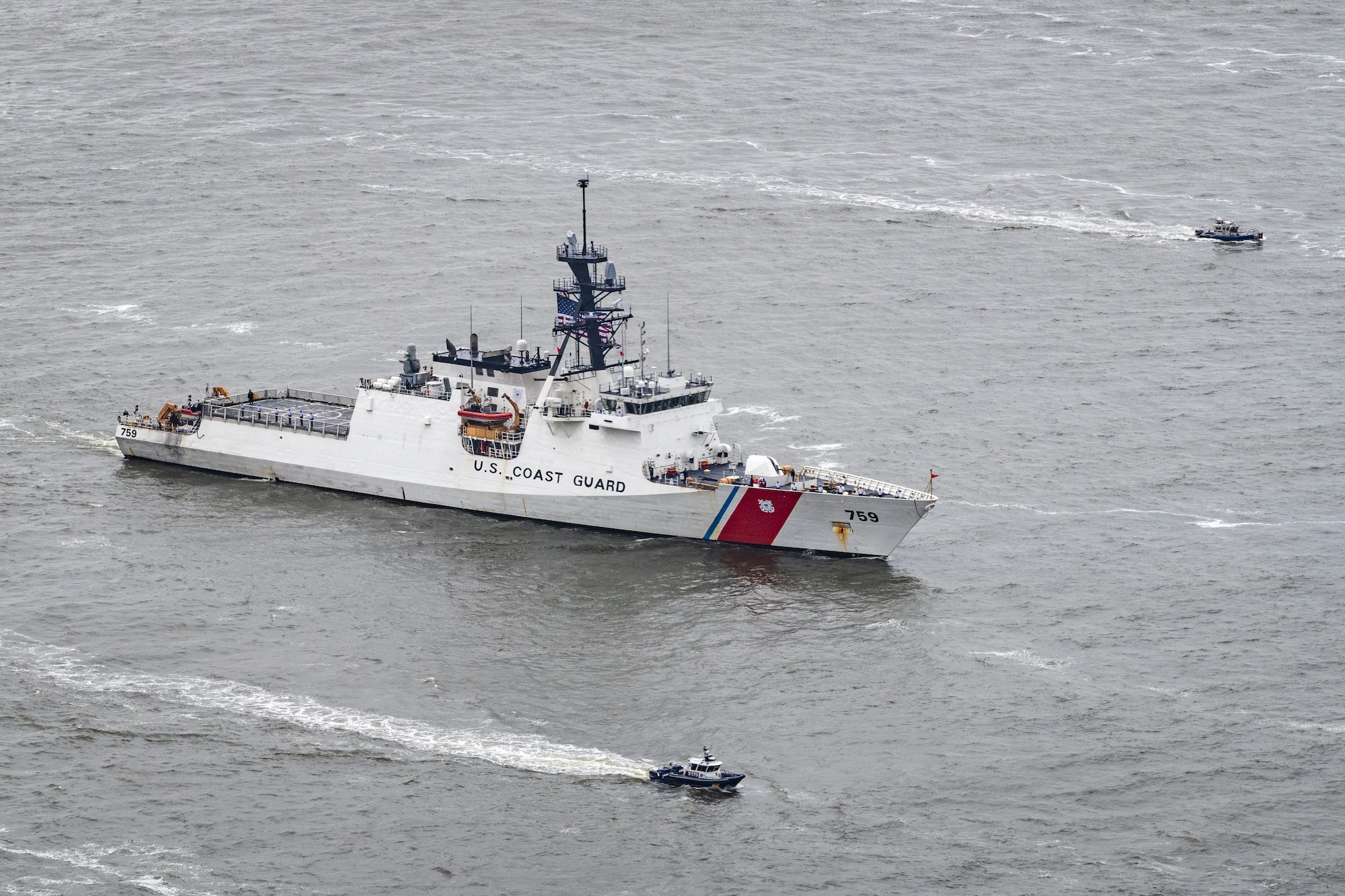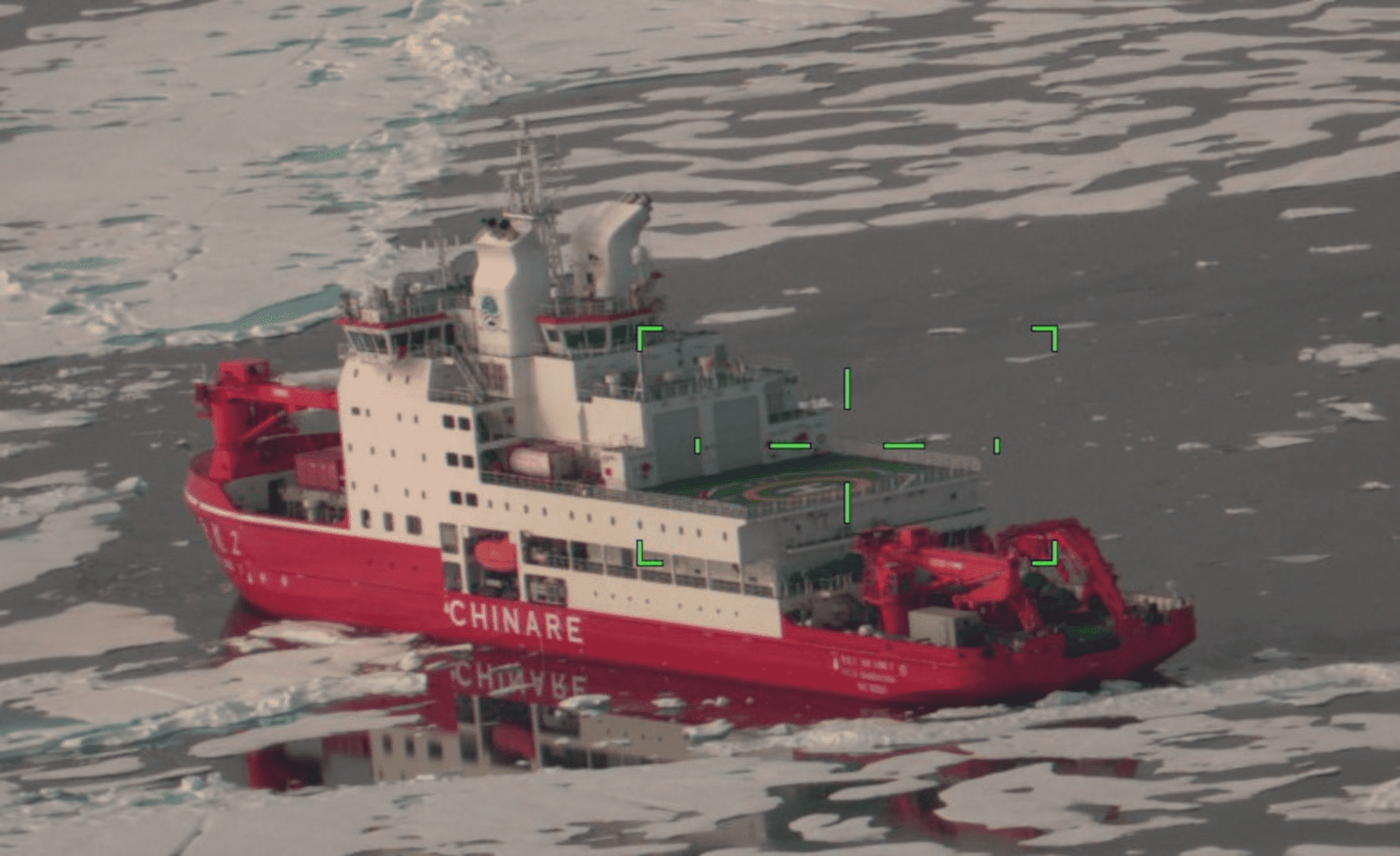Analysis of the Analysis
By John G. Denham
Recently three ponderous documents have been published that may eventually affect pilotage, ship management and hopefully bridge resources management (BRM): USCG report on the allision involving the COSCO BUSAN; NTSB report on the same and the public submission by John Meadows and K&L lawyers representing pilot John Cota.
In examining the reports I arrived at the conclusion that the author(s) are mostly legal people, and therefore compose legally but not nautically. In my up-bringing, I was exposed to a knowledgeable senior officer named that assigned me to review a collision report. “Normally,” he said, “I seek an officer with some personal experience in these thing, but they don’t seem to be around much, therefore as you seem to be somewhat involved. Look this over. Pick out the B.S.” He felt the best experts on accidents were those with actual experience. In three earlier published articles the conduct of bridge team management was presented, the procedures for handling pilots was discussed and the role of persons in command was explained. I have experienced all that and at times did not do too well. Since I have learned a lot from others’.
The NTSB and the USCG have compiled more data than an entire class at any law school could digest in a year; most is relevant, but in the attempt to present all the facts it’s thicker than the fog on 7 November 2007. And by the way, “49 USC section 1154(b) precludes the admission into evidence or use of Board reports related to an incident or accident in a civil action for damages resulting from a matter mentioned in the report.” I am impressed with the volume, but wonder how many trees were dropped to promulgate the pages of analysis, conclusions and findings which took almost two years and may not be admissible.
Having perused (I actually read all three), I noted what I call a land-man conception about the role, duties, and responsibilities of ships’ pilots and the relationship with ship captains. Pilot liability is not mentioned as it scares the pilot, because most persons working as pilots favor the understanding that a pilot is usually not held liable because something goes amiss. In the past the accepted ruling was a pilot is responsible only for his personal negligence and that must be affirmatively shown. To hold the pilot liable, he or she must be shown to have been negligent and since negligence is the cause (sine qua non) of the liability the burden is upon the one alleging it. Therefore in the reports the word negligent (ence) is sprinkled freely.
California regulations affirm for the SFBP “While the pilot is on board the navigation of the vessel devolves on him.” And,
When a pilot goes aboard a vessel, the pilot becomes a servant of the vessel and its owner and operator. Nothing in this division exempts the vessel or its owner or operator from liability to persons or property for damage or loss caused by the vessel or its operation on the ground that (1) the vessel was piloted by a pilot, or (2) the damage or loss was incurred as a result of the error, omission, fault, or neglect of a pilot.
U.S. Regulation 33CFR Section 164.11. lays the conduct of the navigation and management of the vessel on the Master and assigns a less onerous responsibility to the person directing the movement of the vessel, however that person can not be expected to fix the vessel’s position and plot it on a chart and conn the ship.(1) [a]. Foreign flagged vessels are exempt, therefore, Cota by California regulation is it.
The USCG and NTSB both agree the pre-departure exchange is essential in this case. NTSB: “ (2) the absence of a comprehensive pre-departure master/pilot exchange and a lack of effective communications sailing conference during the accident voyage”. USCG: “2. Contributing to the cause of this casualty was the failure of the pilot and master to conduct a proper pilot-master exchange prior to getting underway —“. Included in the alleged “accident preventing exchange” the USCG added that (Cota) “arrived at the vessel more than one hour before departure and had plenty of time to discuss his own plans with the master.” As there is only one route to the sea it would appear a plan would be redundant, but the visibility and equipment operations were discussed as was the exchange of ship-pilot and pilot-ship information.
The departure of COSCO BUSAN from berth 56 in Oakland can not be accomplished without the explicit approval of the Master, regardless of weather. Only the ship talks to the crew; the pilot may mouth the words, but the Captain authorizes them.
Restricted visibility, near-zero visibility, foggy, fog, heavy/dense fog or safe speed have no specific dimension, and are interpretative. 1/4 mile visibility at Oakland can be greater or less elsewhere. Being able to see both sides of the Oakland Estuary is not restricted visibility for an experienced pilot, but most pilots know that it may worsen , or improve as time and distance change. The USCG states, “ Prior to, and at the time of the casualty, participants in the VTS reported visibility in the Bay as low of 350 feet. And, while waiting to undock, COSCO BUSAN delayed for an inbound tug and barge to pass. Fog is a weather condition, not a restriction. It is a common view amongst pilots, based on cumulative experiences, that fog is manageable but an undisciplined foreign crew lacking language understanding is a hazard.
COSCO BUSAN’s full sea speed is rated at 25 knots. In-port maneuvering RPM are limited to 65 ahead and astern and the maximum speed recorded prior to the allision was 10 knots by an electronic source. It’s not understood how a conclusion on safe speed was achieved without the availability of the maneuvering characteristics for a deep loaded COSCO BUSAN in shallow water.
The USCG report indicates the COSCO BUSAN did not have a BRM in place from the time underway until the allision. ”The Master, third officer and an able seaman were on the bridge with the pilot.”. A minimum of three ships officers are needed to accomplish the BRM duties while navigating in congested waters.(1)[a]. Once underway the Chief Mate or Second Mate were available.
The Master of COSCO BUSAN accepted the “compulsary” pilot on board with the expectation of utilizing his experience, knowledge and skill as a ship handler and expert in local waters. The pilot was justified in expecting the owners, master and crew of COSCO BUSAN to provide professional, reliable performance and support including navigation, equipment operation and ship management as per 33CFR Section 164.11. The exchange between master and pilot as described in section 2.1 of the USCG report is not uncommon and happens often without ill effect. Many pilots and masters have indicated they are not impressed with BRM and officious ship’s personnel. The court cases relating to ship captain’s responsibility vs pilot duty is replete with controvers.
An important challenge by K&L lawyers refers to 33CFR Section 95.045 General operating rules for vessels inspected, or subject to inspection, under Chapter 33 of Title 46 United States Code:
While on board a vessel inspected, or subject to inspection, under Chapter 33 of Title 46 United States Code, a crewmember (including a licensed individual), pilot, or watchstander not a regular member of the crew:
(a) Shall not perform or attempt to perform any scheduled duties within four hours of consuming any alcohol;
(b) Shall not be intoxicated at any time;
(c) Shall not consume any intoxicant while on watch or duty; and
(d) May consume a legal non-prescription or prescription drug provided the drug does not cause the individual to be intoxicated
The USCG report infers the San Francisco VTS did not fulfill its stated mission:
To coordinate the safe and efficient transit of vessels in San Francisco Bay in an effort to prevent accidents and the associated loss of life and damage to property and the environment. We execute our mission by:
MONITORING vessel movements,
INFORMING mariners of other vessels and potential hazards,
RECOMMENDING courses of action when we see a situation that the mariner may not have seen, and
DIRECTING the outcome of situations when necessary to prevent disasters
Further, “The VTS does not routinely direct and control the movements of vessels. In normal, conditions the VTS notifies participants of—contacts deemed to be a hazard, and information about safety —in areas of restricted visibility. When visibility decreases to less than 1.0 mile VTS reports all vessel radar contacts that may affect another vessels transit. The VTS can , when necessary, issue measures or directive to vessels to enhance navigation and vessel safety—:”(1)[d]
The lookout is a person, instructed, and stationed where he or she can best fulfill that duty, it appears the Bos’un and the Chief Mate were maintaining a lookout, but were not the lookout. It is prescribed that maintaining a proper lookout by all available means appropriate includes all person in a duty status, but does not replace the lookout.
The report states,” At the time of departure, the bridge management team was composed of”The Master, third officer and an able seaman were on the bridge with the pilot,” and the pilot (who had the conn. 15). Addendum 15 states:: The person with the “conn” is the person giving the engine and helm commands. —the Master—-had the ultimate authority and responsibility for the vessel.” It appears that California and the U.S. are not in sync, whereas the . The IMO STCW Section B affirms:
The master of every ship is bound to ensure that watch keeping arrangements are adequate for maintaining a safe navigational watch, keeping in mind the bridge resource management principles stated in part 3-1 of section B-VIII/2 of the STCW code. Under the master’s general direction, the officers of the navigational watch are responsible for navigating the ship safely during their periods of duty, when they will be particularly concerned with avoiding collision and stranding (1)[a]
The media has been less than accurate whereas it was reported Cota was the pilot, “at the helm,” “steering the vessel” and Captain of the COSCO BUSAN.
Among the several missing items considered germane to the investigation is:
1. a statement or reported observations whereas Cota showed any signs of intoxication or drug impairment;
2. as the vessel recently departed the LA/LB area it would seem appropriate to inquire into the ships performance in that port;
3. a copy of the COSCO BUSAN maneuvering characteristic data in shallow water and in a loaded condition
4. a copy of SFBP Harbor pilot card.
Alerts have been issued to the involved parties: vessel owners, operators, mariners, pilots, port authorities and government. Accidents occur, and will continue, investigations will be conducted, evidence and testimony collected, meetings will be held and hopefully all parties can participate, followed by analysis and conclusions and eventually, published findings. Do not expect any significant change to occur until the owners, operators, sea going folk, pilots and port authorities join and resolve the human errors factor. Non-compliance is slovenly seamanship. JGD
(1) [a] Organizing and Managing the Bridge team. USNIP, September 1994
[b]The Care and Feedign of Ship’s Pilots. USNIP, August 1993
[c]Why Ddin’t SlowDown. USNIP, January 1996
[d] : A Word on Vessel Traffic Service. . gCaptain.com. Feb 19, 2008

 Join The Club
Join The Club










